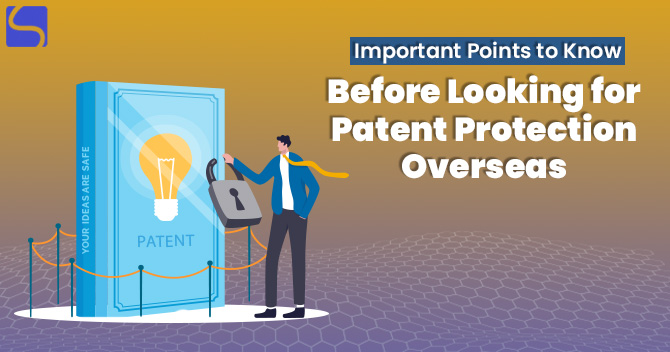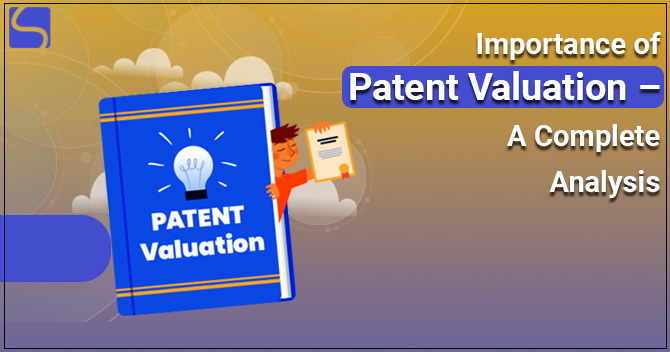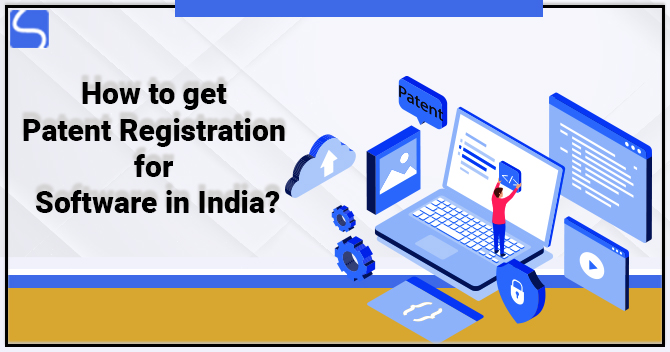Important Points to Know Before Looking for Patent Protection Overseas

Karan Singh | Updated: Dec 27, 2021 | Category: Patent
As you may know, Patents have limited territorial scope, which means Patent Rights can only be implemented in the nation where a Patent application has been filed or applied. Hence, if you are looking to take your technology or business outside of your domestic country, it is recommendable that you expand your Patent Rights in all nations of interest. It aids you in fully leveraging your Patent Rights and boosting business revenue. In this blog, we’ll discuss some vital points to remember before looking for Patent Protection Overseas.
Table of Contents
Why is it Necessary to Expand your Patent Protection Overseas or Globally?
Earlier when inventors didn’t have to worry about protecting their IP (Intellectual Property) outside their country. This is because products were conceived, purchased & manufactured within their territory or region. However, the rise of globalisation and e-commerce has altered this dynamic. Now, a product produced in a single corner of the world can easily be sold & manufactured all over the globe. Moreover, applicants are looking forwards to the Patent Protection Overseas, especially for an invention having an international Market.
However, the worldwide economy puts forth a set of challenges for the applicants and/or inventors. One of them is how to make sure that your invention is safeguarded in nations that have easy access to your process/product? The answer to this question is that by filing an application for Patent Registration in those nations and expanding your Patent Rights there. Patent Rights or Protection make it hard for your opponents to use your technology or innovation without your due authorisation.
Different Methods to Seek Patent Protection Overseas
While you are looking for Patent Protection Overseas for your invention, it is necessary to know that there is no such option to get an international Patent. To obtain Patents in multiple nations of interest, the following are the methods to seek Patent Protection Overseas:
- PCT (Patent Cooperation Treaty) Application: Patent Cooperation Treaty is a WIPO (World Intellectual Property Organisation) administrated global treaty. It approves Patent owners or holders to file a single International Patent application to obtain Patent Protection Overseas at once. Patent owners or holders can file an application for Patent Registration simultaneously in more than 150 nations. The process involves filing a Non-Provisional Patent application with WIPO or with the National Patent Office within 12 months from the 1st filing date of a Patent application.
- Overseas Filing License: Oftentimes, candidates don’t see any benefit of filing a Patent application in their local Patent Office due to the smaller market potential and Non-Patentability of the invention. In such a case, a candidate or an applicant can directly file a Patent application through PCT or Convention Route, in the nations of interest, after getting an Overseas Filing License or written consent from the respective local Patent Office to file a Patent application outside their local nation or country.
- Conventional Application: While using the Paris Convention method for filing Patent applications in various nations, a candidate can file a Patent application either directly or within 12 months after the filing date of the first application in respective nations. Further, Paris Convention applications can also be filed in nations that are not signatory to the Patent Cooperation Treaty. These comprise Pakistan, Hon Kong, etc. It is vital to state that filing a Convention application is beneficial when a candidate wants to safeguard its invention in a few nations. But, a Foreign Filing License needs to be attained from the local Patent Office if the candidate wants to file the application directly in nations of interest.
What is a PCT Application?
One must have to file a Patent application or priority application with the national Patent Office before filing an application in various countries or nations using the PCT Route. Otherwise, the candidate can also file a PCT application directly after getting a Foreign Filing License from their local Patent Office.
The procedure of filing a PCT application is divided into two phases; the National and International phases. This simply means that it begins with filing an international application and concludes with the filing of a national phase application in the regional or national Patent Office. The process of PCT has been described below:
- International Stage:
- PCT Application Filing: A candidate can file the PCT application with the national/regional Patent Office or WIPO[1] holding the PCT guidelines. The application must be filed either directly after getting a Foreign Filing License or within 12 months of application filing with the local Patent Office.
- Global Search: The process involves recognition of the published Patent documents and technical literature by the ISA, or International Searching Authority has chosen by the applicant or candidate. After that, an International Search Report and written opinion is issued by it, which aids the candidate to estimate whether its invention is patentable or not. The report and written opinion are issued within 16 months from the first filing date of the application.
- Publication: The International Patent application comes under the public domain after 18 months from the first filing date. It is required to be published within 18 months from the first filing date of the application.
- International Preliminary Examination: This step also involves ISA, which conducts an extra patentability examination on request. This conducts extra patentability analysis on request. This is generally carried out on the altered version of a Patent application. After that, it issues an IPER or International Preliminary Examination Report.
- National Stage: Once the PCT procedure is finished, nearly 30-31 months after the first application filing date, you can begin continuing the grant of the Patent directly before the regional or National Patent Offices of the nations where you are interested in obtaining Patent protection.
Conclusion
To end up, ensuring Patent protection in various nations of interest is encouraging for businesses that aim to launch their product in multiple geographies. Both the Paris Convention Routes and PCT should be logically deemed by you, depending on your business goals. At the same time, your primary focus while making a choice should be safeguarding the invention within your immediate market, be it national or global.
Read our Article:All You Need to Know About Patent Invalidity Search














